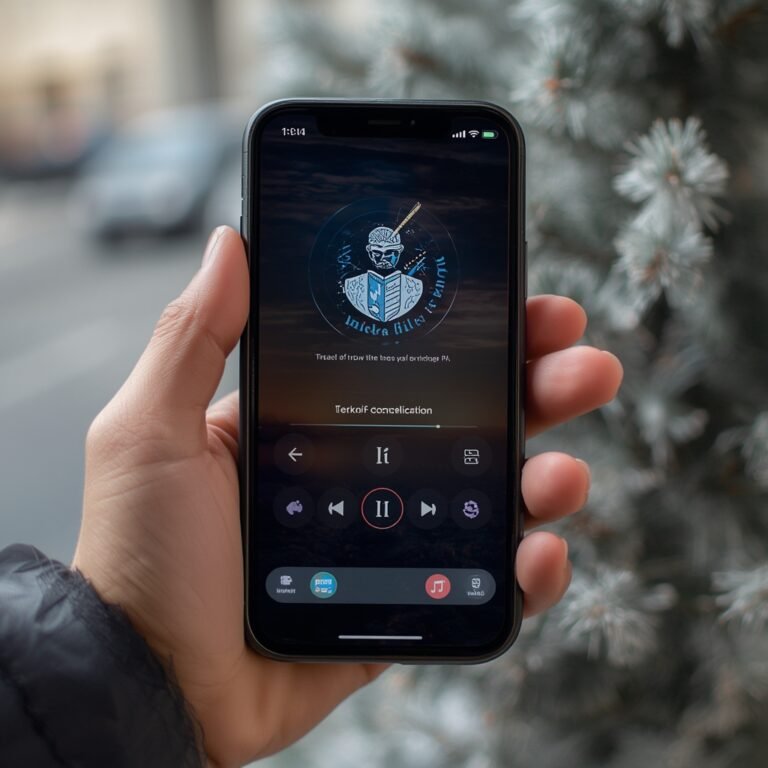A vpn connection is one of the foundational technologies enabling secure and private communication across public networks. For IT managers and network engineers, understanding its mechanisms, limitations, and operational nuances is vital for safeguarding enterprise traffic, enforcing compliance, and maintaining network performance.
What is a vpn connection?
A vpn connection (Virtual Private Network connection) is a secure, encrypted link between a user’s device and a remote server. This tunnel allows data to pass privately over untrusted networks such as the internet. By masking IP addresses and encrypting data packets, it prevents unauthorized interception or monitoring of network traffic (source: Wikipedia).
From a technical standpoint, a vpn connection operates at either Layer 2 (Data Link) or Layer 3 (Network) of the OSI model, depending on the protocol used. Common implementations include IPsec, OpenVPN, and WireGuard, each with distinct cryptographic methods and encapsulation schemes.
For a deeper look into hardware-based solutions, see what is a vpn concentrator.
How does a vpn connection work?
When a vpn client initiates a connection, it first authenticates with the vpn server using credentials, certificates, or shared keys. Upon validation, both ends negotiate encryption parameters, typically involving protocols such as AES-256-GCM for encryption and SHA-2 for hashing. After a session key is established, data packets are encapsulated within the chosen vpn protocol and transmitted securely through the tunnel.
In simpler terms, the vpn client wraps each outgoing packet in another packet — a process known as encapsulation. The vpn server unwraps it, decrypts the contents, and forwards it to the target destination. The reverse occurs for incoming data. This bidirectional encryption ensures that even if intercepted, the data remains unreadable.
What are the main benefits of using a vpn connection?
For enterprises and cybersecurity teams, the benefits are multifaceted:
- Data confidentiality and integrity: Encryption prevents packet sniffing or tampering on public networks.
- Remote access control: Employees can securely connect to corporate networks from external locations.
- Geo-policy management: Organizations can enforce routing through specific gateways to comply with data sovereignty laws.
- Anonymity and privacy: User identities remain protected, reducing the risk of targeted attacks.
An additional benefit lies in secure torrenting or remote file sharing; binding applications such as qBittorrent to vpn interfaces prevents IP leaks, as detailed in how to bind qbittorrent to vpn for secure torrenting.
What types of vpn connection are there?
Vpn connections can be categorized by topology and purpose:
- Remote-access VPNs: Enable individual clients to connect to a private network from anywhere via the internet.
- Site-to-site VPNs: Connect entire networks (e.g., branch offices) over the public internet, forming a wide-area secure link.
- Layer 2 Tunneling Protocol (L2TP) VPNs: Operate at the data link layer, encapsulating PPP frames within IP packets.
- SSL/TLS VPNs: Browser-based or client-based solutions using HTTPS for transport security.
- Modern protocols: WireGuard and IKEv2/IPsec offer enhanced speed and cryptographic efficiency (source: TechRadar).
Site-to-site models are especially useful for businesses that require persistent inter-office connectivity, as explored in which statement describes an important characteristic of a site-to-site vpn.
When and why should you use a vpn connection?
Organizations deploy vpn connections primarily to secure traffic across distributed environments — remote offices, teleworkers, and cloud infrastructure. For example, connecting on public Wi-Fi or an untrusted ISP without encryption exposes sensitive traffic to packet inspection and potential compromise.
In corporate environments, vpn usage also ensures that security policies (firewalls, DLP systems) apply consistently, regardless of user location. For IT teams, this uniformity simplifies compliance reporting and network segmentation.
However, vpn connections are not a one-size-fits-all solution. In some scenarios, encrypted DNS alternatives like DNSCrypt may suffice, as discussed in Is DNSCrypt an Alternative to VPN?.
Constraints and performance:
Every vpn connection introduces some degree of latency and throughput reduction. The performance impact depends on several variables:
- Encryption overhead: Stronger algorithms such as AES-256 require more CPU cycles.
- Server distance: Longer physical routes increase round-trip times.
- Protocol efficiency: WireGuard tends to outperform OpenVPN due to its streamlined cryptography.
- ISP policies: Some ISPs throttle or deprioritize encrypted traffic.
Empirical testing across mid-range laptops and enterprise routers shows a typical 5-15% latency increase and 10-25% bandwidth reduction compared to direct connections. For applications like VoIP or real-time trading, this must be factored into QoS planning.
Performance tuning techniques — such as MTU adjustment, UDP preference, or using split-tunneling — can offset part of this overhead (source: Cloudflare Learning).
Are there risks or limitations to a vpn connection?
Despite its security benefits, a vpn connection can introduce operational risks:
- Centralized failure: The vpn gateway becomes a single point of failure if redundancy isn’t configured.
- Logging and compliance: Misconfigured logging can breach privacy laws.
- Compatibility: Some services, especially streaming or banking apps, may block vpn traffic.
- False sense of security: VPNs do not replace endpoint protection or zero-trust models.
For example, users often assume vpn connections are universally legal; yet, jurisdictions like China impose restrictions (see is vpn legal in china – What You Must Know (2025)).
How can you set up a vpn connection on different devices?
Setting up a vpn connection depends on both the protocol and the platform.
On Windows or macOS, most enterprise environments use built-in IPsec or IKEv2 clients configured via system settings or group policy.
On Linux, OpenVPN and WireGuard are commonly deployed using command-line interfaces and configuration files.
On mobile devices, lightweight protocols such as WireGuard or IKEv2 provide stable connections even when switching between networks (e.g., Wi-Fi to LTE).
Modern vpn providers simplify onboarding through preconfigured apps or cloud-based deployment tools. For example, some cloud security platforms allow zero-touch configuration by distributing .ovpn or .conf files with embedded certificates.
A complete setup guide can be found in how to use a vpn – Step-by-Step Guide for Beginners.
What security protocols underpin vpn connections?
Several standardized frameworks define how vpn connections encrypt and authenticate data:
- IPsec (Internet Protocol Security): A suite of protocols that secures IP communication by authenticating and encrypting each packet. It operates in tunnel or transport mode.
- SSL/TLS: Used in SSL VPNs to provide encrypted connections through standard HTTPS ports.
- WireGuard: A modern protocol designed for simplicity and speed, relying on Curve25519 for key exchange and ChaCha20 for encryption.
- L2TP over IPsec: Combines tunneling and encryption for legacy systems.
Each protocol has unique advantages. WireGuard’s compact codebase makes it easier to audit and maintain, while IPsec remains a regulatory requirement in many government or enterprise frameworks (source: RFC 4301).
How does encryption ensure vpn connection integrity?
Encryption within a vpn connection guarantees confidentiality, integrity, and authenticity. When a packet is transmitted, it’s encapsulated and encrypted with session keys negotiated during the handshake phase.
Two mechanisms are critical:
- Symmetric encryption — used for data transfer due to its efficiency.
- Asymmetric encryption — applied during key exchange and authentication.
Most enterprise-grade VPNs rely on Perfect Forward Secrecy (PFS), which ensures that even if one key is compromised, previous sessions remain secure. Engineers should verify PFS support within their configurations, especially when deploying site-to-site VPNs across hybrid cloud networks.
For real-world performance comparisons between leading providers, refer to AirVPN vs NordVPN: Which VPN Offers Better Security & Speed?.
How do organizations manage vpn connection scalability?
Scalability depends on architecture. Centralized vpn concentrators can handle thousands of simultaneous sessions but require load balancing and redundancy.
Large enterprises may adopt SD-WAN with integrated vpn capabilities, enabling dynamic routing and failover between branches.
Cloud-first companies increasingly favor distributed gateways that offload encryption workloads closer to users — improving latency while maintaining security policy consistency.
In designing scalable vpn infrastructures, consider:
- Using multiple entry points across regions.
- Employing dynamic DNS for client auto-discovery.
- Implementing split-tunneling where compliance allows.
- Integrating MFA for endpoint authentication.
What monitoring and compliance measures apply to vpn connections?
Vpn connections must be audited for both security and regulatory compliance. Logging connection attempts, bandwidth usage, and authentication events helps detect anomalies such as brute-force attempts or credential leaks.
Modern monitoring solutions integrate vpn telemetry with SIEM platforms, enabling real-time visibility across multi-cloud and hybrid environments.
IT teams must balance retention policies against data privacy laws such as GDPR or CCPA. Logs should be anonymized or encrypted to maintain compliance.
Additionally, periodic penetration testing and policy audits ensure configurations remain consistent with evolving standards (source: Kaspersky Blog).
How are vpn connections evolving?
Emerging trends suggest a gradual convergence between vpn technology and zero-trust network access (ZTNA) models. While vpn connections traditionally create perimeter-based tunnels, ZTNA enforces identity-centric and context-aware access per session.
Future implementations may integrate quantum-resistant algorithms, automated certificate rotation, and AI-driven anomaly detection to improve both resilience and adaptability.
The evolution also involves balancing usability with strong security: simplified onboarding, single sign-on integration, and adaptive routing are already becoming standard in enterprise VPNs.
Conclusion
A vpn connection remains essential for maintaining secure, encrypted communication in today’s distributed digital landscape. By understanding its architecture, encryption methods, and performance limitations, IT managers and cybersecurity professionals can deploy vpn solutions that balance security, compliance, and operational efficiency.



